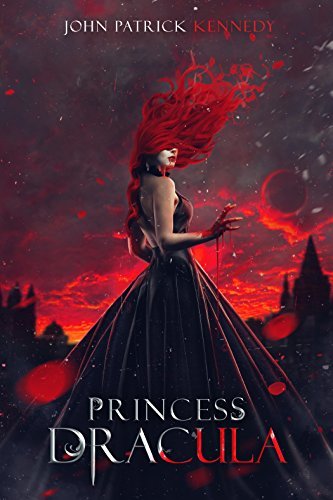
Universal Monsters: Dracula
Book Description
Beneath the shadows of a darkened castle, fear and desire intertwine in a deadly dance. Count Dracula awakens, hungry for more than just blood—he craves power, control, and a legacy that will never fade. But as the brave souls of a besieged town unite, their quest to confront the ancient evil sparks a brutal battle of wits and wills. Suspense thickens with every page, as alliances crumble and secrets unravel. Can the forces of light extinguish the darkness before it's too late? Is there anything more terrifying than the monster that lies within us all?
Quick Book Summary
"Universal Monsters: Dracula" by James Tynion IV is a haunting reimagining of the classic vampire legend, told through gripping visuals and atmospheric storytelling. Awakening from centuries of slumber, Count Dracula emerges as both a monster and a mastermind, craving not only blood but dominance over those who challenge him. The people of a nearby town, suffering under his shadow, muster their courage and form uneasy alliances in an attempt to stop him. As Dracula's reach expands, secrets are brought to light, and the true nature of heroism and monstrosity is questioned. The graphic novel deftly explores themes of power, corruption, human frailty, and the seductive allure of darkness, crafting a horrifying yet thought-provoking narrative that lingers long beyond the last page.
Summary of Key Ideas
Table of Contents
The Allure and Corruption of Power
The story begins with Count Dracula's awakening in his ancient, brooding castle. His return is marked by a chilling hunger and a relentless drive for power that transcends mere survival. Dracula is not content to hide in the shadows—he seeks to extend his legacy, turning fear and desire into weapons against those who would oppose him. The town living under his constant threat is depicted under a pall of fear, its residents growing increasingly desperate as Dracula’s sinister influence seeps into every aspect of their lives.
Fear, Desire, and Human Nature
In response to Dracula’s reign, a diverse group of townsfolk bands together. Uniting against a common enemy, they nonetheless struggle with internal conflicts, old grudges, and clashing motivations. Alliances are fragile; fear and suspicion breed betrayal. The narrative skillfully examines how collective action can be both a source of strength and a breeding ground for discord, especially when trust is in short supply. As the group navigates the labyrinthine corridors of the castle and their own mistrust, the real battle becomes one of wits and resilience against a foe that seems almost omniscient.
Unity and Betrayal among the Besieged
At the heart of the confrontation with Dracula lies a deeper conflict: the struggle between the monstrous and the human, both externally and within each character. Dracula himself embodies the seductive allure of immortality and the corruption that immense power brings. The graphic novel uses compelling visuals to showcase how the townspeople, in their desperation, sometimes mirror the very darkness they fight. Each character faces temptations and fears that reveal more about their own capacity for weakness and cruelty, blurring the line between hero and villain.
The Duality of Monsters—Within and Without
As secrets unravel and allegiances shift, the pace intensifies toward a brutal crescendo. Revelations about Dracula’s past, as well as the hidden motivations among the resistance, add complexity to the narrative. Ultimately, the battle against Dracula becomes symbolic of the fight against our own inner demons and the choices that define us. Some rise to the challenge, changing in the crucible of crisis, while others succumb to their fears.
Legacy, Immortality, and the Price of Darkness
In the aftermath, "Universal Monsters: Dracula" reflects on the price of victory and the enduring nature of darkness. The town may defeat the monster, but at significant cost—innocence lost, relationships fractured, and a lingering sense that evil is never truly vanquished, merely transformed. The thoughtful ending incites readers to ponder the true legacy of Dracula and the monsters within us all, ensuring the legend endures in both fear and fascination.
Download This Summary
Get a free PDF of this summary instantly — no email required.





